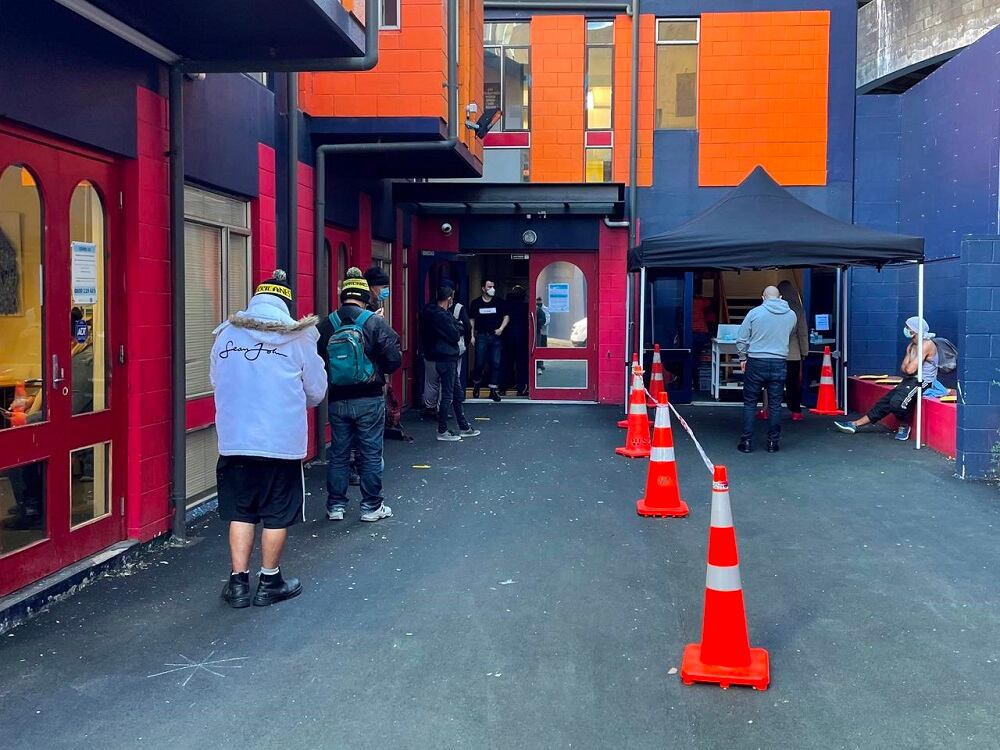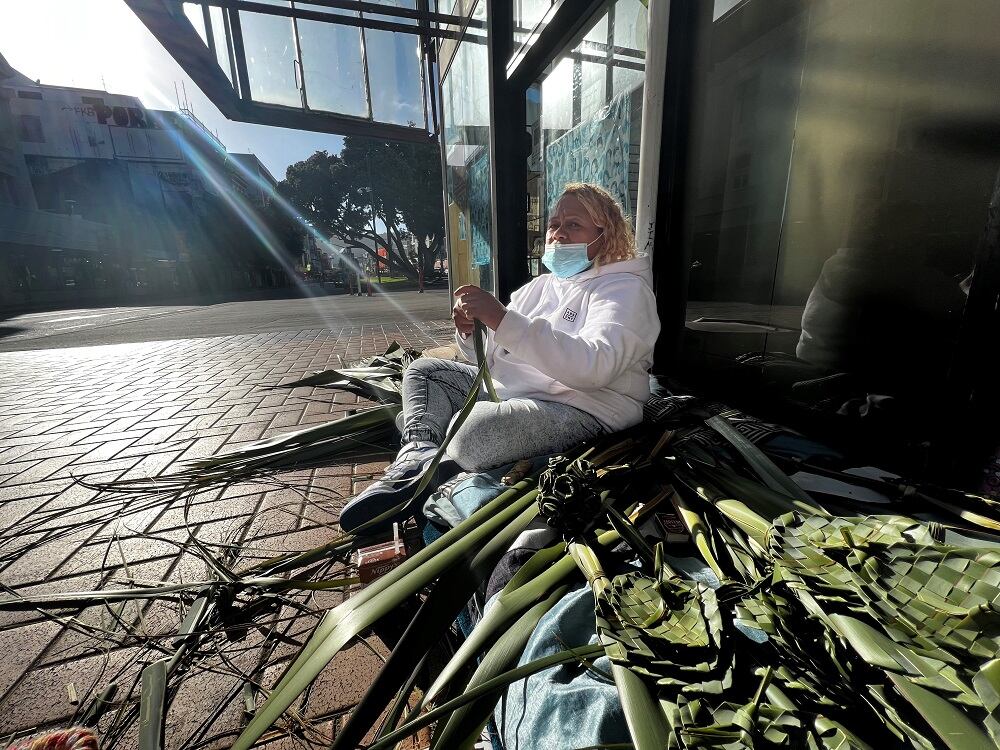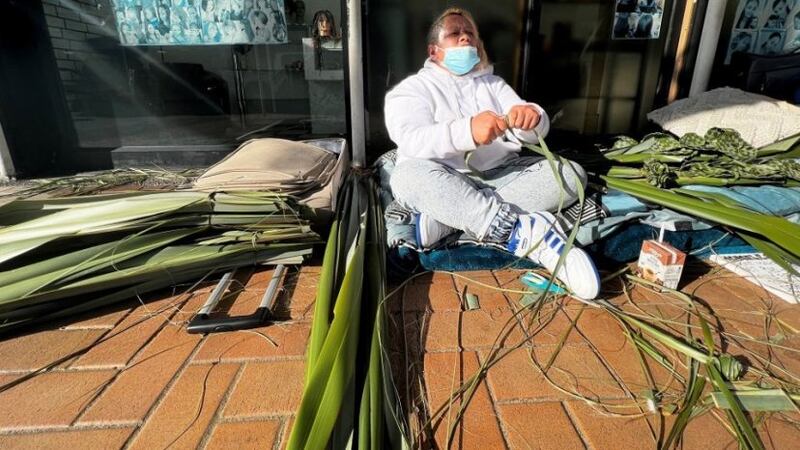Surrounded by harakeke on a busy street in the Wellington CBD, the sun shines brightly on Frankie’s face – she says she’s been sleeping on the streets for "years".
Weaving a range of items such as putiputi, kono and kete, Frankie says she uses weaving as a form of therapy and to make her some extra pūtea. With Christmas on Saturday, she says she’s keen to use the money to buy her some new clothes, and maybe something for her friends who are also rough sleepers
“I love weaving, it’s very therapeutic. I enjoy it and the Wellington folks love my work and it helps me get by on the streets,” she said.
Native to Northland, Frankie, who has whakapapa links to Hokianga in the Far North, says her grandmother taught her how to weave.
“I’ve been weaving since I was seven years old. My grandmother taught me how to make piupiu. Then she taught me to make putiputi.”
Natalia Cleland is the outreach team leader at Downtown City Ministry (DCM) an organisation that has been helping people on the fringes of society in Poneke for over 50 years. She says that while the numbers of rough sleepers vary from month to month, the last year saw a significant increase.
In the financial year ending June 2021, the ministry had helped over 1200 people who were facing some form of homelessness. More than 50% of these are Māori.

“It's the same old story, mental health and addictions that are unmet. They don’t meet service requirements, they’re unreliable to turn up to appointments and, if they do, they turn up under the influence, so they’re excluded from those services.”
Cleland says for many of the homeless and rough sleepers, there is disconnection from their whakapapa and communities. "Not many people who live rough in the CBD are from Wellington," she said.
Just want a house
The 2018 Severe Housing Deprivation estimate results indicate Māori made up 26% of those living without shelter. 18% of those living in commercial accommodation. 37% of those sharing accommodation

Frankie has her heart set on getting a home. She’s been housed previously but suitability has always been an issue.
Cleland says that while so much effort is being put into temporary and emergency accommodation – she’s yet to see a concerted effort into more long-term housing solutions for people on the streets.
“We need to see more homes being built. We need to see current rentals being procured for social housing.”
“The wins and the gains for people is when they have permanent homes.”

